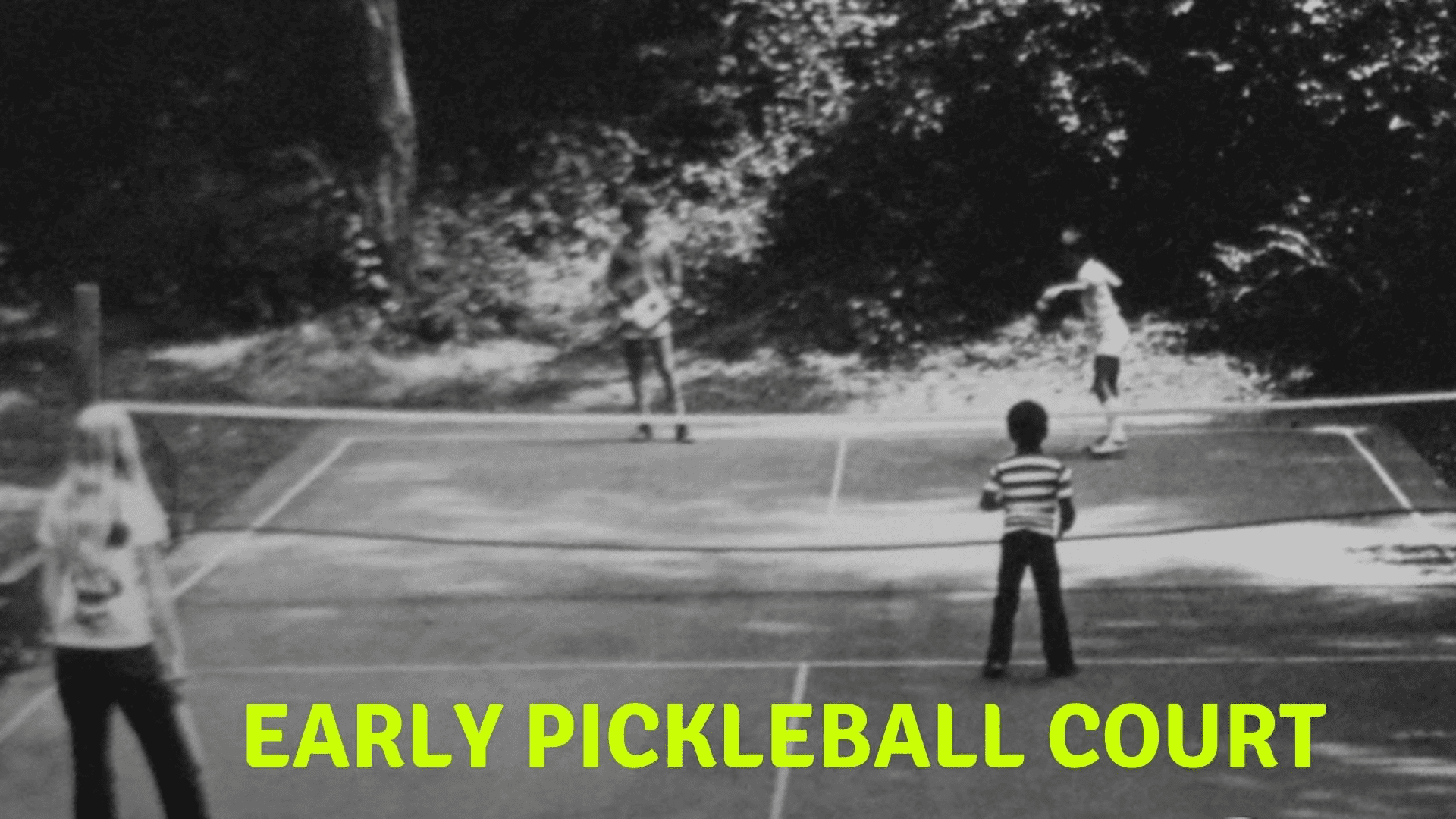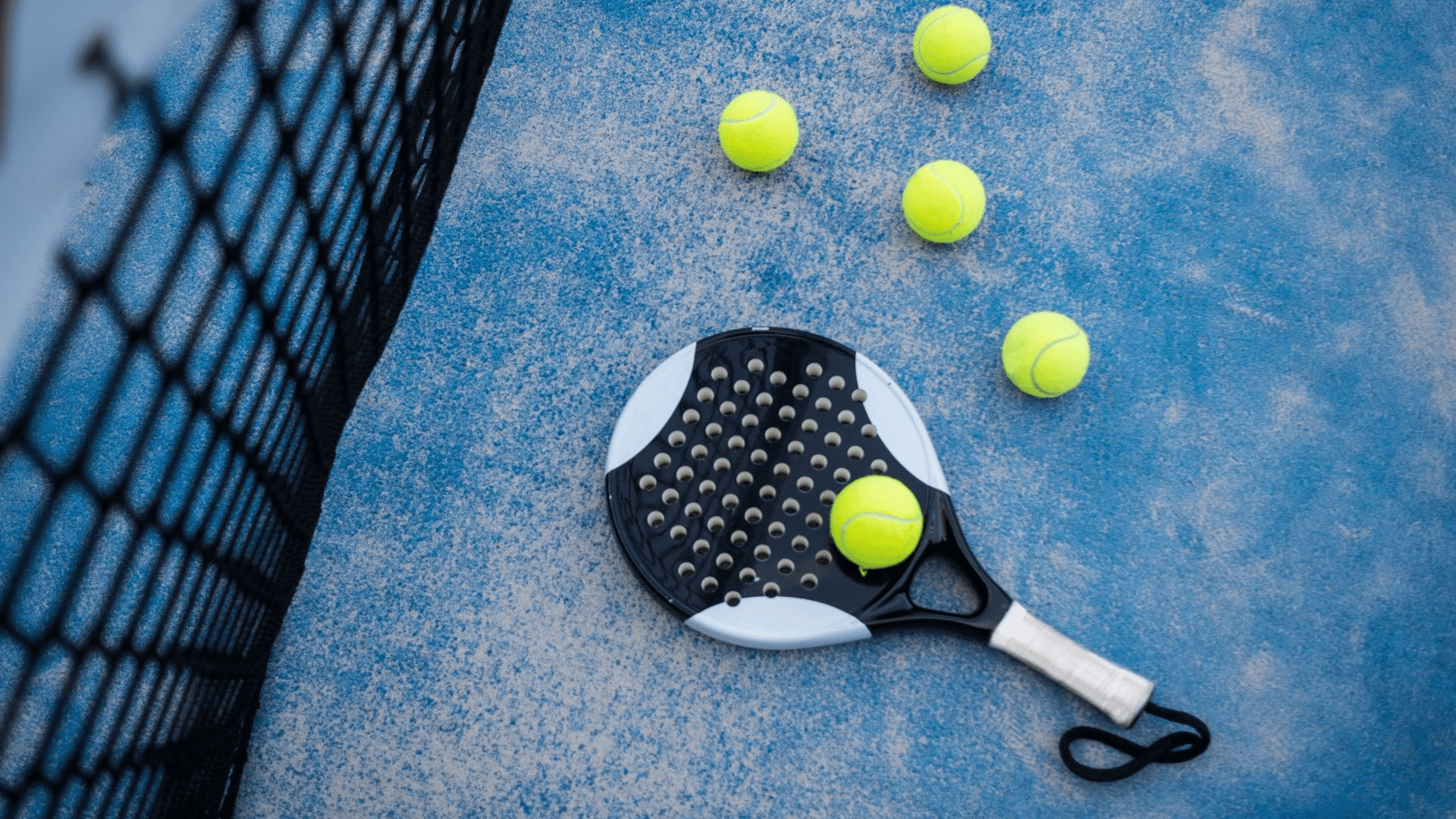If you’re looking for a new racket sport, you may wonder if padel or pickleball is right for you. Both sports are similar in some ways, but there are also key differences that set them apart. Here’s a comprehensive look at padel vs. pickleball, including a breakdown of the key differences between the two sports.
There seems to be much confusion around similarly named racket sports today; pop tennis, paddle tennis, and padel tennis are a few names that get interchanged often. We will differentiate between all these racket sports to give you a better understanding of the games and how they are different.
Table of Contents
TogglePadel – Origin and History
Padel is an exciting and fast-growing racket sport established in Acapulco, Mexico, in 1969 by Enrique Corcuera. It is played on an enclosed court and takes elements from platform tennis and squash. In 1974 the game was extradited to Spain via one of Enriques friends, eventually becoming so widely played it overtook tennis’s popularity throughout Spain.
Padel is played in over 90 countries worldwide and boasts over 25 million players. There are two professional tours, and Spanish and Latin players dominate the pro tours. While hugely popular in Latin countries, padel continues to take off worldwide, and Britain, Sweden, and Italy are taking notice and building padel courts throughout their countries.
The game of padel is similar to pickleball, but there are some key differences we want to talk about below.
Read our comparison of tennis and pickleball next

Padel – Court Dimensions
Padel courts are different sizes for singles and doubles and are significantly bigger than pickleball courts. While singles games do happen, most courts are for doubles. A doubles padel court dimensions measure 65ft 7in or 20m long and 32ft 8in or 10m wide.
The defining characteristic of padel is that it has an outcourt on either side of the main court, which players can still play on. Openings on each side of the main court enable players to run to the outcourt and hit the ball back onto the court. These outcourts measure 6.5ft wide, or 2 meters, by 13 ft long, or 4 meters.
The surrounding court walls are 9.8 feet (or 3 meters) high, and the side walls are 6.5 feet (or 2 meters). The net height is almost like a pickleball measuring 34 inches (or .88 meters) from the ground.
Padel – Rules of Play
Padel typically played doubles, although singles are an option; 90% of padel courts are doubles courts. The scoring system is the same as traditional tennis–15, 30, 40, Duce, or point. The winner of the set is determined by whoever wins six games first, and padel usually is played with the best-of-three-games format.
Key points that make padel unique
-
Begin a point in padel; the server must stand behind the service line and serve the ball to the diagonally opposite service box. The serve must be hit underarm and below waist level.
-
Players must serve the ball to bounce in their opponent’s service box. If the ball hits either side glass or back glass wall, it is still a good service, and play continues. However, if the ball hits wire fencing after bouncing in the service box, that is considered a fault.
-
At least one foot must remain on the ground when hitting the ball. The server’s feet may not touch or cross the service line while serving. If the ball hits and then bounces off the net and into play, it is a let; however, if it touches before bouncing a second time, it is counted as a fault. A player gets two first serves.
-
It uses the same scoring system as tennis, so you can easily transition
-
Padel can play doubles or singles.
-
After the ball is in play, any balls crossing the net must bounce off the ground on your opponent’s side before hitting a glass or wire wall. If your opponents return the ball over the net and it hits their wall before bouncing on the ground, you will lose that point.
-
Except when receiving a serve, players are allowed to hit a volley. When serving, the ball must bounce first.
-
You can also return the ball to the opponent’s side by hitting it after it bounces off a wall. The ball may only bounce once on your side, and you can only hit it once.

Pickleball – Origin and History
Pickleball was invented in Bainbridge Island in 1965 by three fathers looking to entertain the family. They combined rules from badminton and ping pong and frankly made them up as they went along. The first pickleball court was on an old badminton court and the first paddles used were solid wooden paddles cut from plywood. Regarding the name, there are two conflicting stories about the origin of pickleball’s name. On one side, Joel Pritchard and his wife Joan credit the name to the pickle boats. According to Joan, pickleball reminded her of a pickle boat race from her college years at Marietta.
On the other hand, according to the McCallums and Browns, pickleballs originated from a dog named ‘pickles.’ According to the story, pickles would pick up the “Wiffle Ball” with its mouth and run off. As this became a habit, they decided to name the sport after the dog. Although according to Prichard’s daughter, they got the pickles two years after the game was invented.
While this is the most popular story on the name origin of pickleball, it may not be the truth. If you want the history behind pickleball, check out this article: History of Pickleball – Facts, Myths, and Why It’s So Popular.
Pickleball Court Dimensions and Scoring
The court size for pickleball is the same whether playing singles or doubles, 20 x 44 feet, which happens to be the same size as a doubles badminton court. A unique part of the court dimensions on a pickleball court is the segment of the court referred to as the kitchen, and it’s a 7ft section on either side of the net where players aren’t allowed to hit volleys. The net height is almost identical to padel at 34in the middle of the court and 36in the sidebars.
Regarding scoring, pickleball is unique because only the serving team can score points. Players or teams play until one team reaches 11 points and wins by at least two points; best of three games overall. However, pickleball tournaments can score differently at times, and games are played to 21 or 15 points.
Key points in pickleball scoring:
-
The serving side is the only side that can score a point.
-
The singles rotation order always starts on the right side of the court (even side)
-
If the server scores, they move to the left side of the court (odd side)
-
The server hits the ball over the net to the diagonal side of the opponent’s court.
-
On the serve, the ball must land passed the non-volley zone (If the ball hits any line in/on the no-volley zone during the service, it’s a fault. Learn all the pickleball line rules in our post!)
-
All serves must be underhand and below the server’s waist.
-
Only one server per player unless there is a let (The ball hits the net and falls into the opponent’s court), then the serve is replayed.
-
The server calls out the score before every score. Start with the server’s score and then your opponents.
To get a complete understanding of the game, we have a comprehensive guide to pickleball scoring.
Pickleball – Rules of Play
Here are a few rules for playing pickleball, be sure to check out our other post if you want an in-depth look at the game.
-
Both players on a team serve before the service is moved to the other side of the court.
-
The players keep switching sides from right to left until a fault is made, then the next person on that team servers.
-
Only the serving team switches sides from left to the right, not the receiving team (even to the odd side)
-
At the start of the game, only one player serves on the first-serving team. Once a fault is made, the service moves to the other team.
-
Calling in out the score is in three parts: the serving team’s score, the opponent’s score, and the team server number (Remember: Me – You – Who)
-
The server number only applies to one service round. Once the ball returns to your side, whoever is on the right side of the court is the first server.

Padel vs. Pickleball – A Comparison
Pickleball is growing in popularity much more quickly than padel. Padel is more popular in Europe and South America, while pickleball is the fastest-growing sport in the United States. Now that you understand each game let’s compare the sports gameplay, popularity, and some other things that set them apart.
-
Padel is more difficult to learn and play correctly, while pickleball is simpler and easier to understand.
-
Padel also requires more expensive equipment. Padel racquets are costly, while pickleball uses a simple perforated plastic ball similar to a Wiffle ball and paddle.
-
Pickleball courts can be set up anywhere or converted from tennis courts into pickleball courts. Padel, however, requires a lot more infrastructure with surrounding walls.
-
Pickleball is less physical than padel, allowing a broader audience to play pickleball.
-
While pickleball’s popularity in the US is something to note, padel boasts 25 million players worldwide, making it at least four times bigger than pickleball.
Pickleball Vs. Padel – Court, Scoring, and Equipment
As we highlighted in each section, there are some interesting and unique aspects of both sports; here are the main ones.
-
Padel courts are bigger than pickleball courts and have a playable outbound area.
-
Pickleball has a no-volley zone that is 7ft on each side of the net.
-
Only the serving team can score in pickleball. This is the only racquet sport that follows these rules.
-
In pickleball, the serving side of the court is the only side to switch.
-
Padel uses a regular tennis ball with less pressure than a traditional tennis ball. Pickleball is played with a perforated plastic ball similar to Wiffle balls.
-
Padel is played closed in four walls that players utilize in their game strategy.
-
Pade rackets, often called bats, are solid construction, made with fiberglass or carbon fiber, often with an EVA rubber core. In contrast, pickleball paddles are made with many core materials, including aluminum, polymer, and graphite.
While there are some similarities, each game is unique in its way. I have yet to have the chance to play padel, but it looks like a fun sport.
Conclusion
Padel and pickleball are two very popular racket sports that have gained much traction recently. Even though they may look similar at first glance, the truth is that they have evolved from completely different sports. Padel comes from tennis, while pickleball was created from badminton. This means there are differences in court dimensions, scoring, and rules of play.
Try both if you still need to decide which racket sport is for you. Padel and pickleball are great exercises and can be enjoyed by people of all ages. And who knows, you’ll become a pro at one (or both!) of them.
If you have played padel before, let us know what you think in the comments below.

